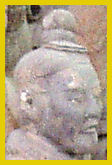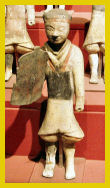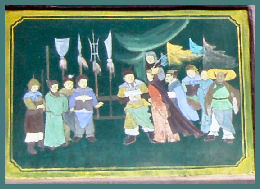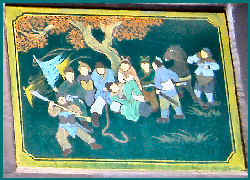Han Buildings
Under the Han dynasty, as the general wealth of the country grew, so did the elaborate displays of wealth and none did it better than the aristocracy. As they were controlled by government decree about what colours they could wear in their clothing, the aristocracy and the growing gentry (who copied everything that was done at court) put the money into their buildings.
Although most buildings remained brick and wood with tiled or thatched roofs, nevertheless, decoration was encouraged. Very little of the Han Dynasty capitals at Chang'an or Luoyang or even the last at Kaifeng, remain. However, many traditions remained into the following dynasties as the Han Dynasty was seen as the most successful and, therefore, something to be copied.
The three pieces below are detail from the palace of Lord Bao at Kaifeng. This is a door lintel in one of the main pavilions.
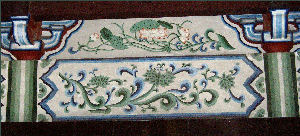
Below is window detail from a long walkway in the gardens of the Lord Bao site. Windows such as these were created so that special gardens could be viewed through them to provide different vistas for the people who lived there, particularly the women, who were trapped within the palace. They were supposed to calm the mind and provide stimulation for the thoughts so that the women would be distracted and not bored within the walls of the palace
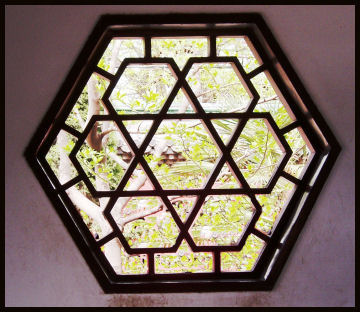
Below is a ceiling plaque from one of the pavilions. The pattern sits within a chequerboard ceiling and is repeated over and over again in the ceiling..
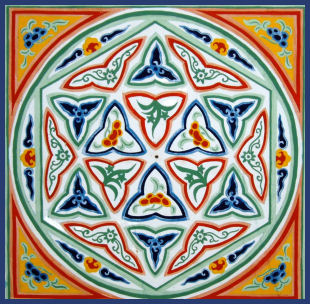
The idea of this decoration can be seen repeated in a house in Pingyao but here it has been given a purpose which is more than decorative. These two pictures appear above the door lintel of the house which is also a business and advertise what business was conducted here - in this case - protection. They are from the Armed Guard Company building.
|
|
|---|
Other merchants and tradesmen wanted the same protection given to imperial palaces by the presence of lion sculptures. However, unable to afford giant size ones to put on guard in pairs at the front gate, cast iron lions were placed in pairs in the entrance way to the main part of the building or house. The one below is one of a pair at the Qiao Family Compound outside Zhengzhou.
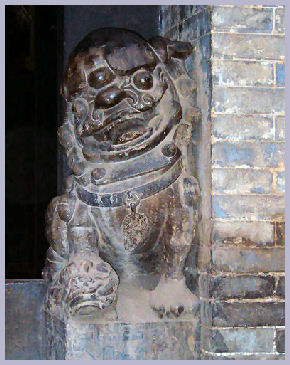
At the same house, intricate stonework was used following the same sort of decorative detail in the palaces. However, as this house is well north of the capitals, it has been built of brick to insulate better against the cold. Despite this, the decorative wooden work of the palaces has been repeated but here, it is in brick and stone.
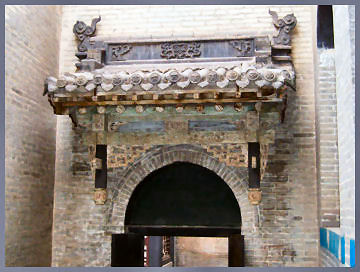
Pingyao is very old and this house entrance is off one of the less used streets behind the facade of houses built in the 1100s. This house clearly shows the years of traffic which have passed through this entrance and the combination of brick and wood.
The inside of one of the other buildings in Pingyao, which is now used as a performance space but only for the local population and not visitors, clearly shows what inner courtyards would have been like. It has a brick building surrounding the courtyard but with wooden stairways, columns and balcony.
Another building at Pingyao is very similar in design and style to the old temple at Gongxian near Zhengzhou with its long sloping front and short, higher back of the building. This time it is built in grey bricks made from the local clay which is available.
This building is another example of the style of buildings at the White Horse Temple, near Luoyang. It is an 11th century AD, grey brick and tile building built on the foundations of a 4th century building and one of the earliest which remains at this site.
